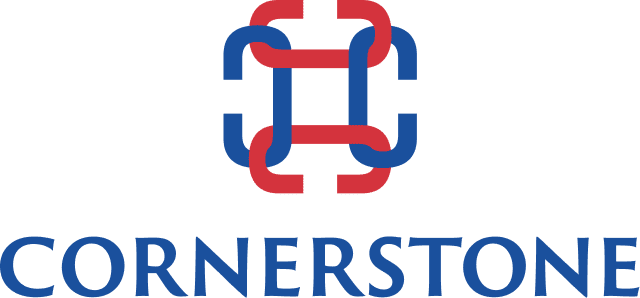The Benefits of Diversity in Executive Recruiting
The growing number of companies that specify diversity in executive recruiting are not doing so because it’s the “right thing to do”. It may indeed be a social benefit, but a company’s mission must be performance based or it goes out of business.
And, since creating a culture of inclusion and a welcoming environment for diversity usually means altering long-standing, strategic plans, the evidence and result must prove greater value than the systems in place.
Put another way, businesses are unlikely to change until there is a foundational reason to do so.
Modern diversity research, (particularly when diversity is intentionally surrounded with an inclusive culture) shows that women in leadership positions positively impact bottom-line revenue, profitability and client perceptions while increasing a brand’s total value.
Businesses with inclusive, diverse cultures achieve three important competitive advantages more easily:
- Better decision making – diverse backgrounds, educations and experiences broaden perspectives and improve the group’s critical thinking
- Innovation – diverse thinking processes facts more carefully while developing and considering a broader array of opportunities
- Broader appeal – diversity more quickly reaches key customer markets, including minority and underserved buyers, to increase sales
Beginning in 2010, the world’s top management consulting and data analytics research organizations explored the “Business Case” for diversity across many industries and markets. Their results contain many similarities and draw essentially the same conclusions.
The Gallup organization, working primarily in retail and hospitality service industries, linked diverse work environments to increased employee engagement. They identified “employee engagement” as a critical factor for driving business metrics upward through improving productivity, quality, employee commitment, retention and profitability. Gallup proved diversity grew sales revenue and net profit.
Scientific American’s research concluded that organizations with inclusive cultures enjoyed:
- Greater innovation
- Greater creativity
- Improved bottom line profits with higher job satisfaction, lowered employee turn-over rates, easier recruiting, and a higher reputation for “good places to work.”
The “Women in the Workplace – 2018” report by McKinsey & Company compares annual results since 2015 and reports higher returns on equity, higher operating profit and higher stock prices year-over-year after organizations adopted and actively supported inclusive/diverse cultures.
Outside specific business and organizational culture research, demographic and economic shifts across the US population are propelling major changes in traditional business practices.
- Women represent slightly over one-half of the workforce population (50.8%). They are a growing percentage of all business’ customers, clients and partners.
- Women influence 85+% of all retail purchasing decisions
- Women impact the B2B market by representing 43% of Purchasing Managers
- Women create Women Owned Businesses
Companies with most women execs earned 34% higher returns
Mind Your Culture found that companies employing the highest percentage of women in executive positions earned a 34% higher return to shareholders than did companies who had few to no women in the same roles. Companies with the most women in Director-level roles performed better than those with the fewest women and achieved 16% higher return on sales plus at least a 26% higher return on invested capital.
The data is sufficiently positive to encourage recruiters to take action. Three years ago, Cornerstone’s Alejandra Aranda persuaded all eight of her competitors in Chile to sign a Code of Good Practice on Gender Diversity for the World Economic Forum.
Western markets tend to be where the diversity action is taking place. According to the MCSI World Index, the majority of companies with at least 3 female directors are in developed markets. In the US market, these companies achieved median returns on equity that were 11% higher and earnings per share of 45% more than companies with no women.
Elsewhere, a steep path gets steeper. Globally, over one-fifth of the 2,694 MCSI Index companies still had all male boards in 2018. MCSI (Morgan Stanley Capital International) projects it will be 2029 before a 30% female representation is attained among corporate directors universally.
These and similar reports also warn of increasingly slow rates of progress in business culture transitions – moving from aggressive, competitive and power-driven organizations to the more “constructive behaviors” type where high potential employees say they are more likely to choose to work and want to stay.
Embedded in many diverse business culture studies is a challenging, pre-existing condition – the elephant in the room. This is the lack of qualified and accomplished women currently visible in top leadership posts, critical to building successful, inclusive cultures and greater businesses.
Successful, diverse business cultures must be inclusive at the highest levels of strategy and decision-making.
A newly released global CXO Survey report by the Cornerstone International Group indicates that a developed sense of Corporate Social Responsibility (CSR) is of growing importance in the transformation of a business culture. The new generation of talent is only willing to work where their social expectations are being met
This no doubt helps to account for a situation where gender diversity on Boards and in the “C-Suite” achieves the highest reported levels of business financial success, yet it is also among the slowest improving rates appearing in published results measurement.
How do you decide if such change right for your business? To know if, when or how a business should become more culturally inclusive, the top leadership team must carefully review present performance inside their unique organization and consider their resources, both financial and human. They must evaluate the challenges and potential rewards, sometimes against other, possible easier and less dramatic paths of change.
Finally, when it comes to recruiting candidates who will contribute diversity and welcome inclusiveness, you must first have built the appropriate environment. Failing this, you run the risk of winning the enthusiasm of brilliant, talented candidates only to see them cross the street when your culture falls short.
Creating the results we are referencing here demands that everyone on the executive team understands, believes and become passionate about cultural inclusion. They must embrace synergy between leadership, customers and employees and take responsibility to become accountable for implementations at every level.
Julio Portalatin, a Board Member with DXC Technology, is on record as saying:
“Make it a priority because it helps the business, not because it’s morally the right thing to do. Have a clear sense of the business case for diverse ideas, thoughts, and opinions brought about by different representation. Hire recruiters who have a track record of attracting very qualified and competent directors, who are also diverse in many ways.”
Members of Cornerstone International Group include recognized leaders in the development of the diverse and inclusive workplace. If you want to know more about the rewards and pitfalls of pursuing diversity in executive recruiting, get in touch. That’s what we’re here for.







